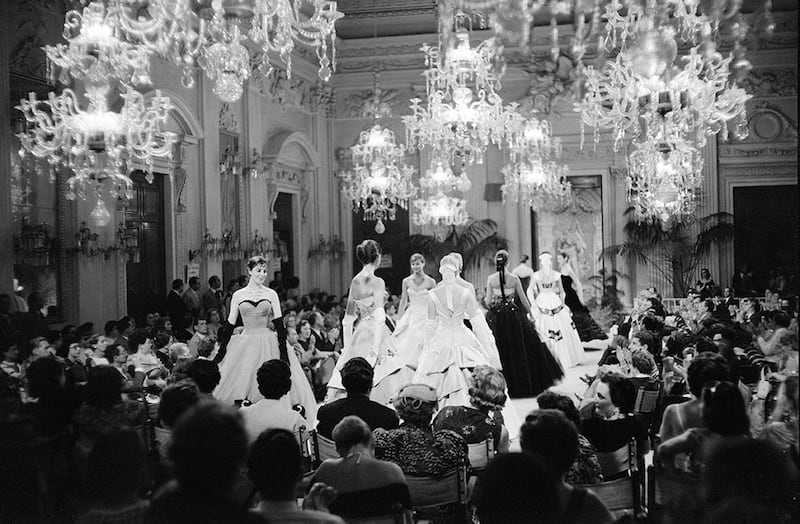
The Business of Fashion
Agenda-setting intelligence, analysis and advice for the global fashion community.

Agenda-setting intelligence, analysis and advice for the global fashion community.

WASHINGTON, D.C., United States — US retail sales fell for the first time in seven months in September, which could raise fears that manufacturing-led weakness was spreading to the broader economy, keeping the Federal Reserve on course to cut interest rates again this month.
The Commerce Department said on Wednesday retail sales dropped 0.3 percent last month as households cut back spending on motor vehicles, building materials, hobbies and online purchases. That was the first and biggest drop since February.
Data for August was revised up to show retail sales gaining 0.6 percent instead of 0.4 percent as previously reported. Economists polled by Reuters had forecast retail sales would climb 0.3 percent in September. Compared to September last year, retail sales increased 4.1 percent.
Excluding automobiles, gasoline, building materials and food services, retail sales were unchanged last month after advancing by an unrevised 0.3 percent in August. These so-called core retail sales correspond most closely with the consumer spending component of gross domestic product.
ADVERTISEMENT
Last month's drop and August's unrevised gain in core retail sales likely suggest a much more significant slowdown in consumer spending in the third quarter than economists had been anticipating after a surge in the prior quarter.
Consumer spending, which accounts for more than two-thirds of the economy, increased at a 4.6 percent annualised rate in the second quarter, the most in 1-1/2 years.
It has been the economy's pillar of support as the White House's 15-month trade war with China has soured business sentiment, leading to a decline in capital expenditure and a recession in manufacturing.
Signs of a rapid deceleration in consumer spending, coming on the heels of data showing a moderation in hiring and services sector industry activity in September, could further stoke financial market fears of a sharper slowdown in economic growth.
Though President Donald Trump announced a temporary truce in the trade war with China last Friday, which delayed additional tariffs that were due this month, economists say the longest economic expansion on record remained in danger without all import duties being rolled back.
The International Monetary Fund warned on Tuesday that the US-China trade war would cut 2019 global growth to its slowest pace since the 2008-2009 financial crisis, and expressed caution over Trump's so-called Phase 1 trade deal, saying more details were needed.
With consumer spending slowing, a full trade deal still elusive and the likelihood of a disorderly exit from the European Union by Britain, many economists expect the Fed to cut interest rates at its October 29-30 policy meeting to keep the expansion, now in its 11th year, on track.
The US central bank cut rates in September after reducing borrowing costs in July for the first time since 2008.
ADVERTISEMENT
The Atlanta Fed is forecasting GDP increased at a 1.7 percent annualised rate in the third quarter. The economy grew at a 2.0 percent pace in the April-June quarter, slowing from the first quarter's brisk 3.1 percent rate. The government will publish its snapshot of third-quarter GDP at the end of the month.
Auto sales fell 0.9 percent in September, the most in eight months, after accelerating 1.9 percent in August. Receipts at service stations fell 0.7 percent, likely reflecting cheaper gasoline.
Sales at electronics and appliance stores were unchanged, getting no boost from the launch of Apple's new iPhone model. Sales at building material stores fell 1.0 percent. Online and mail-order retail sales dropped 0.3 percent, the most since December 2018. That followed a 1.2 percent increase in August.
But receipts at clothing stores rose 1.3 percent, while sales at furniture stores increased 0.6 percent. Sales at restaurants and bars gained 0.2 percent. Spending at hobby, musical instrument and book stores dipped 0.1 percent.
By Lucia Mutikani; editor: Paul Simao.

Antitrust enforcers said Tapestry’s acquisition of Capri would raise prices on handbags and accessories in the affordable luxury sector, harming consumers.
As a push to maximise sales of its popular Samba model starts to weigh on its desirability, the German sportswear giant is betting on other retro sneaker styles to tap surging demand for the 1980s ‘Terrace’ look. But fashion cycles come and go, cautions Andrea Felsted.
The rental platform saw its stock soar last week after predicting it would hit a key profitability metric this year. A new marketing push and more robust inventory are the key to unlocking elusive growth, CEO Jenn Hyman tells BoF.
Nordstrom, Tod’s and L’Occitane are all pushing for privatisation. Ultimately, their fate will not be determined by whether they are under the scrutiny of public investors.